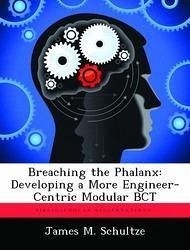The Department of the Army decided to re-structure the combat divisions into modular, brigade units in order to better address the difficulty inherent in fighting a long war on terrorism, while simultaneously providing combat units to OIF and OEF for SSTR operations. These new modular combat units are based on predominantly infantry and armor capabilities and have resulted in a large divestiture of engineering units and capabilities. However, the Army's reduction in its premier re-construction capability lies in stark contrast to the US Department of Defense (DoD) policy directive 30000.05 of November 2005, stipulating for all services to address SSTR as a decisive operation commensurate with the resourcing given other service-specific combat operations. A better solution for the Army could be to invest in more engineer capability as the center-piece of its new modular BCTs. This seems more logical to produce flexible, capable forces rather than divesting the most relevant and flexible capability in the Army inventory: military engineering. This monograph will address the Army's challenge of implementing SSTR as a decisive operation as part of a main attempt to determine a method to "operationalize" a more engineer-centric concept. The BCT needs some capacity to produce longer term progress from the transient tactical victory of killing and capturing the enemy, while still maintaining its ability to conduct core missions of Offense, Defense, and SRO. As part of a search for viable capability design, the monograph will conduct a short survey of historical examples of the combat and construction capabilities of some venerable engineer formations. This survey will focus on engineers as the center-piece for current and future full-spectrum operations. 1940's and 1960's era engineer organization showed a clear ability to fight as well as build, enabling a robust capability for Full Spectrum success. What's more, in the manpower constrained environment of modern deployme
Hinweis: Dieser Artikel kann nur an eine deutsche Lieferadresse ausgeliefert werden.
Hinweis: Dieser Artikel kann nur an eine deutsche Lieferadresse ausgeliefert werden.








